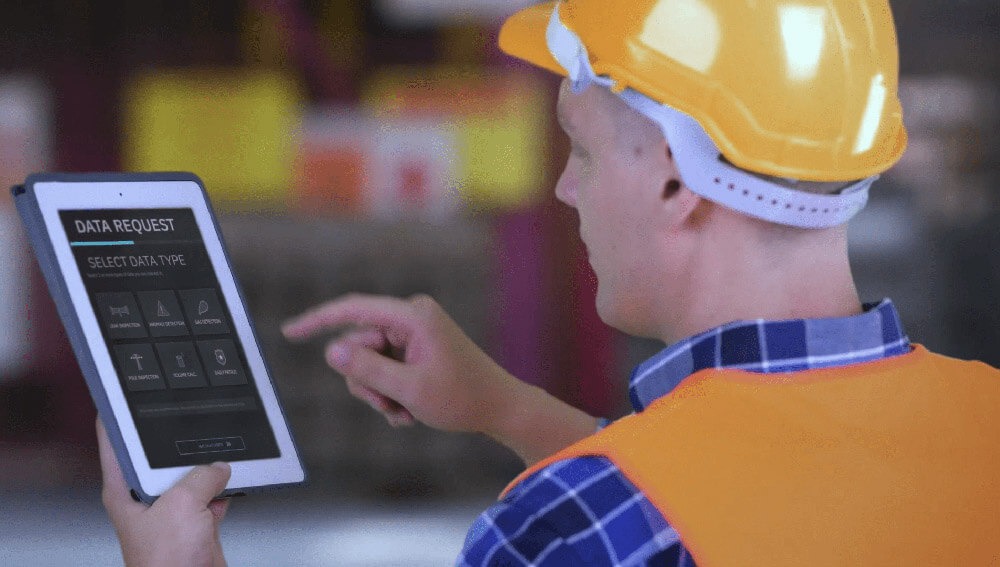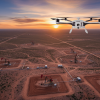Who needs democratization of visual data on industrial sites? Everyone that asks questions but can’t get answers…
I encountered the best illustration of the urgent need for visual data democratization in industrial sites last summer. We were participating in an online emergency response conference. In one session, a drone program manager at a large-scale industrial site told participants about what was to him an unremarkable occurrence: following each drone mission, he would walk from the drone dock to his office, holding the SD card containing the mission data. Along the way, he would be constantly accosted by colleagues, from different departments, asking for access to the mission findings or making requests for future missions.
This phenomenon was not in any way unremarkable, I realized. It was very, very significant. These professionals weren’t asking for this data for fun – they truly felt they needed the footage from the drone’s aerial payload so they could analyze it and make informed decisions in their respective areas of responsibility. It was important enough for them to go out of their way to request the raw data.
The fact was that the data was there, but it was not accessible in a timely manner to those who needed it most. What’s more, even those with access to the raw data couldn’t get the analysis-based insights they needed to drive better decision making.
How simple should it be?
This is the challenge that our newly-launched AIM platform was conceived to address: we set out to create a solution that would eliminate, among other phenomena, what we refer to as drone operator stalking. Because requesting and receiving access to visual data-driven insights should be as easy as…for example… placing an order on amazon.
My family loves the comparison to the simplicity and convenience of ordering something online. If we need phone chargers for example, and we often do, we open the Amazon app, select the cables we want and checkout. We choose what we want, click a button, and can follow our order status online while we wait for it to arrive.
When we order something online, we don’t even need to enter our address and payment information each time. We definitely don’t need to specify where the chargers come from, who packages them, or the delivery route to our house. We order. We get it. Everything else happens behind the scenes.
This is exactly the level of simplicity we were seeking when we created AIM. For any AIM-enabled industrial site, anywhere on the planet, authorized stakeholders can initiate a request and know with certainty that they’ll get timely, specific, accurate and actionable insights based on up-to-date visual data. They don’t have to call anyone. They don’t have to define technical mission parameters. They don’t even have to worry about the time zone at the target site. It’s literally as simple as placing an order online. In fact, below you’ll find a sneak peak at the workflow of the AIM mobile app. Look familiar?
![]() What’s unique here is that everything between AIM order and delivery happens automatically. No human operators walking with SD cards, no inspectors with clipboards entering data manually into terminals. This is the true power of Percepto AIM.
What’s unique here is that everything between AIM order and delivery happens automatically. No human operators walking with SD cards, no inspectors with clipboards entering data manually into terminals. This is the true power of Percepto AIM.
Who needs democratization of visual data?
The level of simplicity that AIM delivers is game-changing. AIM empowers a wide range of users to do their job better, and creates a safer, more productive facility overall.

AIM offers tangible benefits to:
- Maintenance – Research has shown that data-driven maintenance can lower annual unplanned downtime rates by nearly 40%. Allowing maintenance personnel to request and receive insights for preventative and ongoing maintenance helps them better to prioritize their assets, focus their efforts in the field, and minimize unplanned downtime.
- Operations – Operations are frequently tasked with monitoring and tracking work progress in a construction site, or monitoring the volume of production output in industries like mines. Enabling Operations personnel to initiate autonomous monitoring of remote construction sites or stockpiles enhances their productivity and positively impacts the bottom line.
- Compliance – When regulatory compliance is mission-critical, continuous data-driven monitoring ensures that regulated parameters stay in the green. Empowering compliance staff to proactively and remotely check emissions temperatures, safety standards, and everything in between ultimately raises compliance and lowers liability.
- Safety – Industrial sites are dangerous places. Enabling safety stakeholders to proactively monitor sites and personnel for violations of safety regulations and procedures can literally save lives, and measurably impact liability across the enterprise.
- Security – Remote and large industrial sites that house complex and expensive assets are a security challenge. Enabling security staff to proactively patrol or monitor site perimeters, gates, and on-site stock lowers both risk and security overhead.
- Emergency response – In times of crisis or during drills, emergency response personnel require clear and rapid situational awareness. Letting response teams remotely examine affected areas or assets helps them respond more effectively and resolve emergencies with less damage to life and property.
- Management – Effective management demands field-level insights, contextualized with historical trends. Empowering managers to initiate ad hoc or periodic missions to monitor ongoing work, while comparing findings with previous missions, helps them keep a finger on the pulse of each site.
The Bottom Line
There is an increasing demand for data, especially visual data, as well as the insights derived from it. More and more organizational stakeholders are turning to data sources to better fulfill their roles. Yet in many industrial sites, access to updated data is limited or siloed – if such data even exists. And the process of obtaining constant and repetitive data and insights – if it exists – is cumbersome, unreliable, and dependent on manual labor.
AIM changes all this. By democratizing access to visual data and the actionable insights automatically derived from it – making collection and analysis as easy as placing an order online – we deliver a new level of empowerment to both organizations and the individuals that comprise them.





